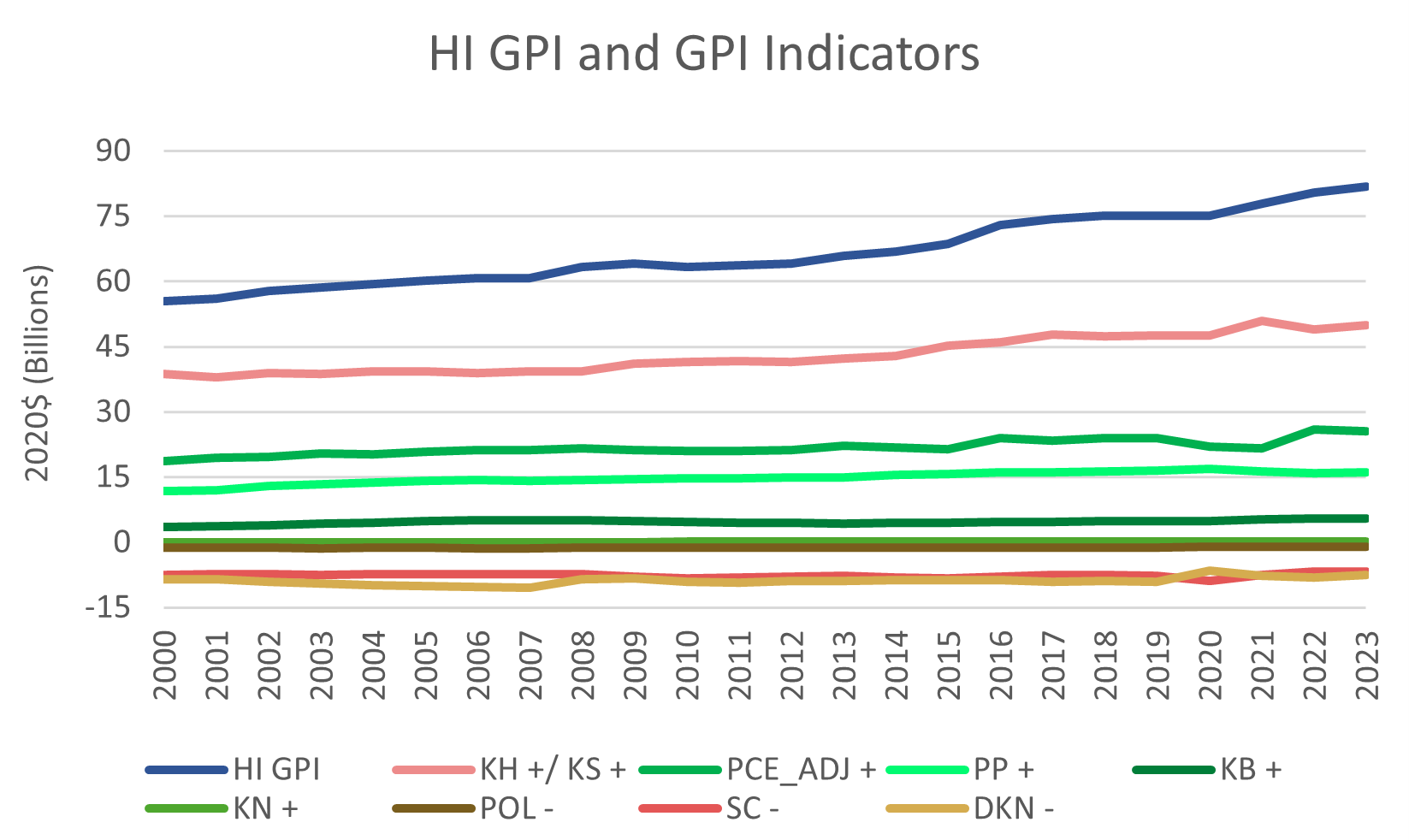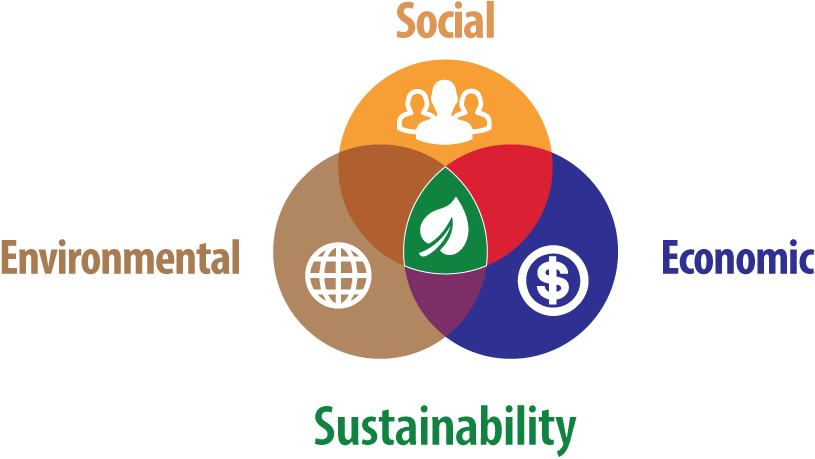HAWAII GENUINE PROGRESS INDICATOR (HI GPI) – DETAILS
Hawaiʻi’s Genuine Progress Indicator (HI GPI)
The structure of HI GPI consists of 8 indicators and 42 sub indicators that span economic, social, and environmental components poised to capture both benefits and costs of economic activity within our state. The calculation of HI GPI begins with Personal Consumption Expenditures (PCE), the same base for calculating GDP. Moving through the series of indicators, GPI either adds or deducts from the base of PCE depending on whether the sub indicator registers increased or decreased welfare. See Calculating Hawaii’s GPI for further information.
 Services from Human and Social Capital (+KH, +KS) were the largest contributor to HI GPI, followed by Adjusted Personal Consumption (+PCE_ADJ). Deductions for Depletion of Natural Capital (-DKN) and Social Costs (-SC) were the largest amongst the three cost categories (Pollution (-POL) being the other). HI-GPI-Indicators-Excel-Table
Services from Human and Social Capital (+KH, +KS) were the largest contributor to HI GPI, followed by Adjusted Personal Consumption (+PCE_ADJ). Deductions for Depletion of Natural Capital (-DKN) and Social Costs (-SC) were the largest amongst the three cost categories (Pollution (-POL) being the other). HI-GPI-Indicators-Excel-Table
Economic Component:
Adjusted Personal Consumption Expenditure (+PCE_ADJ ): PCE_ADJ is calculated as Personal Consumption Expenditure (PCE) minus: Defensive and Regrettable Expenditures (-DEFR), Household Investment (-HI), and Consumer Durable Expenditures (-CDE); the result of which was then adjusted for income inequality in society.
Public & Non-Profit Provision of Goods and Services (+PP): The annual value of goods and services consumed by households/individuals but produced by Federal non-defense, state and local governments, or non-profit institutions serving households (NPISH).
Built Capital Services (+KB): While related additional non-consumption items are subtracted from PCE (e.g. -HI), the future services of these investments must then be accounted for here.
Social Component:
Social and Human Capital Services (+KS/KH): Services from investments in Social and Human Capital are accounted for by estimating a flow of social payoffs.
Social Costs (-SC): Captures social costs that result from economic activity but reduce overall welfare, such as homeless/houselessness, underprovided labor hours, commuting time, or damage from crimes.
Environmental Components:
Protected Areas Services (+KN): Natural capital provides ecosystem services that enhance welfare beyond merely provisioning market goods and services that may be already accounted for in market consumption.
Local Pollution Costs (-POL): Costs related to the damages from local pollution resulting from economic activity are deducted because they are not welfare enhancing.
Depletion of Natural Capital (-DKN): Justified as the decreased welfare generated by the depletion of different types of natural capital for those who are willing to pay to prevent their loss.
HI GPI General History
GPI has evolved since the 1980’s as a complementary indicator to more accurately and holistically capture economic, social, and environmental welfare benefits and costs not evident through GDP accounting.
GPI has been applied at national and subnational/state levels in the U.S. and internationally. Recent work towards developing a newer model, i.e., GPI 2.0, has led to methodological advances, including more comprehensive coverage of non-welfare enhancing expenditures and impacts of economic activity, as well as inclusion of services from various forms of capital. Hawaiʻi GPI 2.0 is the application of the theory, principles, and practices of GPI to the context of the state of Hawaiʻi. Hawaiʻi GPI 2.0 closely follows the model set out by Talberth and Weisdorf (2017). The Hawai’i GPI 2.0 is an updated, expanded, and more rigorous version of the GPI as compared to the original efforts from 2014 (Ostergaard-Klem & Oleson, 2014).
Report
Hawaiʻi’s Genuine Progress Indicator (GPI) Report 2022
